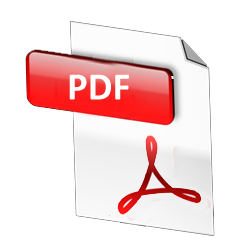Article 8222
| Title of the article |
SIMULATION OF THE ELECTROMAGNETIC DRIVE OF THE RUDDERS OF AN UNMANNED AERIAL VEHICLE |
| Authors |
Aleksandr E. Solov'ev, Doctor of technical sciences, associate professor, deputy director of the institute, head of the sub-department of electrical engineering and electrical equipment, Tula State University (92 Lenina avenue, Tula, Russia), E-mail: ivts.tulgu@rambler.ru |
| Abstract |
Background. The object of the study is the electromagnetic rudder drive of a small-sized aircraft. To verify the necessary quality of rudder control of a small-sized aircraft, the work solved the actual problem of compiling a mathematical model and modeling the electromagnetic rudder drive. The aim of the work is to obtain a mathematical model to determine its main parameters at the stage of conceptual design. Materials and methods. The description of the electromagnetic drive behavior process is based on a technique based on the Lagrange equation. Displacement x and electric charge g are taken as generalized coordinates. For the electromagnetic-mechanical system, the Lagrangian is composed, with the application of which the Lagrange equation is constructed. Results. On the basis of the proposed methodology, the principle of compiling a mathematical model of an electromagnetic drive consisting of two springloaded electromagnets of the retractable type connected by a rigid mechanical linkage is shown. Conclusions. The proposed mathematical model of the processes occurring in the electromagnetic RP allows to determine its main parameters and can be used at the stage of conceptual design. |
| Key words |
electromagnet, steering gear, unmanned aerial vehicle, mathematical model |
 |
Download PDF |
| For citation: |
Solovev A.E., Novakov A.V. Simulation of the electromagnetic drive of the rudders of an unmanned aerial vehicle. Izmereniya. Monitoring. Upravlenie. Kontrol' = Measurements. Monitoring. Management. Control. 2022;(2):61–68. (In Russ.). doi:10.21685/2307-5538-2022-2-8 |
Дата обновления: 28.06.2022 15:08


